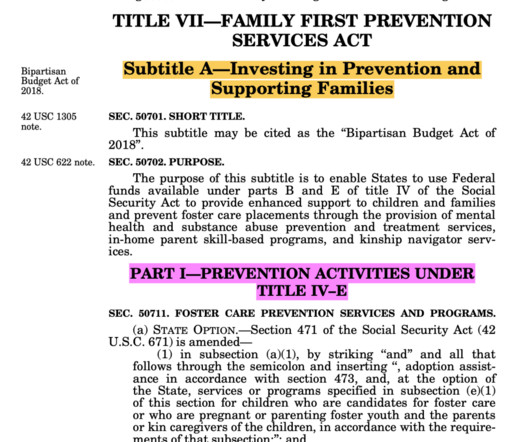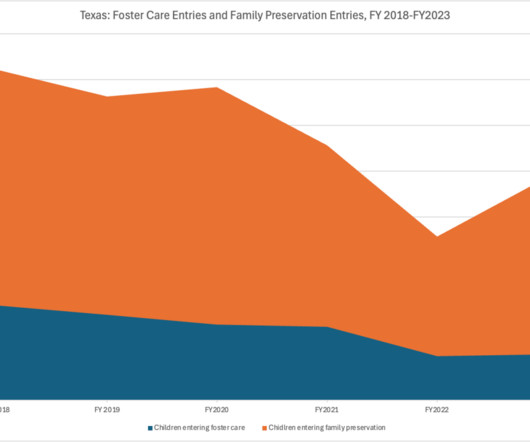The fundamental misconception at the heart of the Family First Act
Child Welfare Monitor
SEPTEMBER 9, 2024
But above all, these services were funded by Medicaid, a federal entitlement program that receives the same federal match as Title IV-E. Because most parents involved with child welfare are covered by either Medicaid or (more rarely) private insurance, they could be referred to these services. What could Congress have done instead?














Let's personalize your content